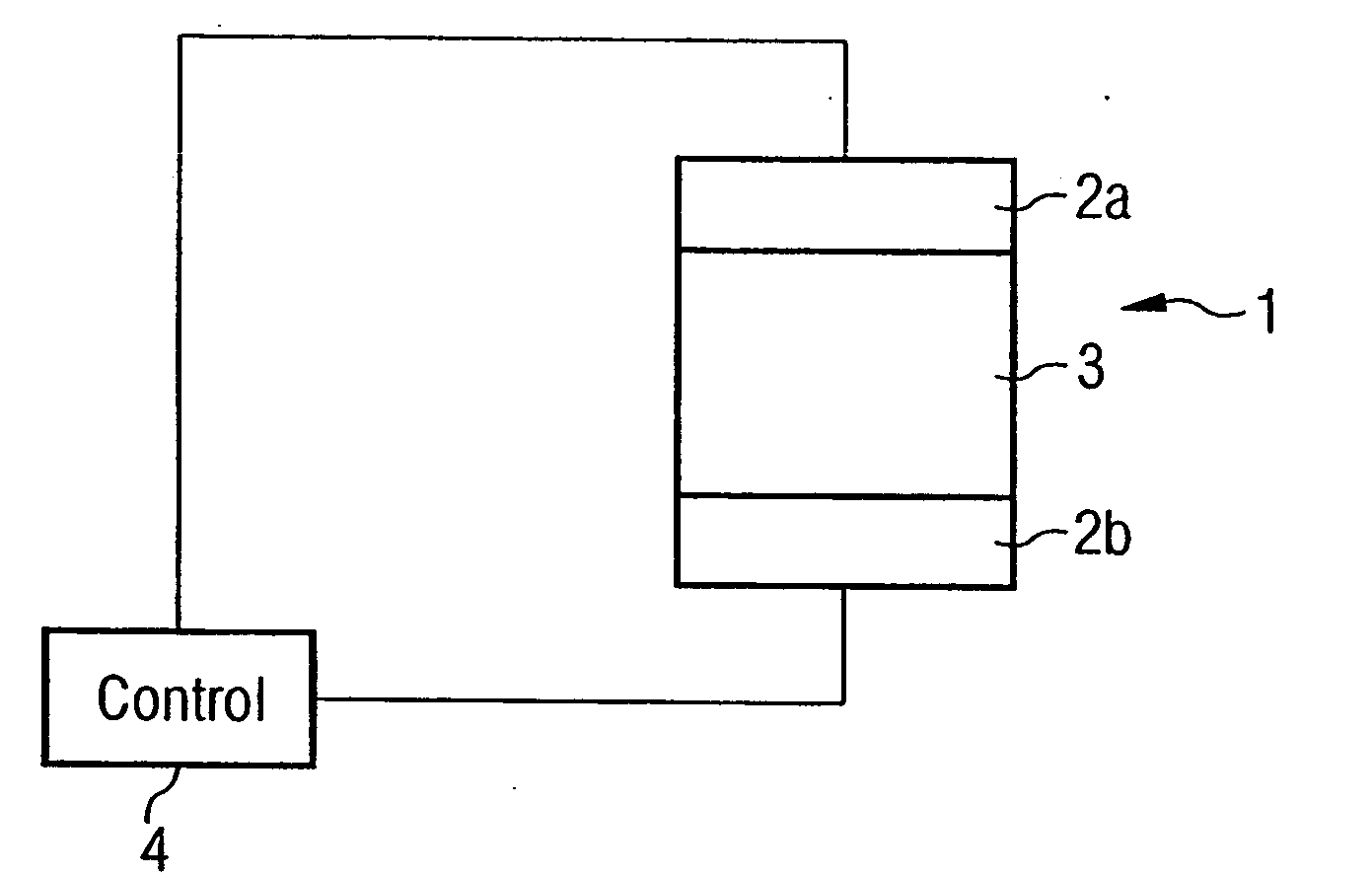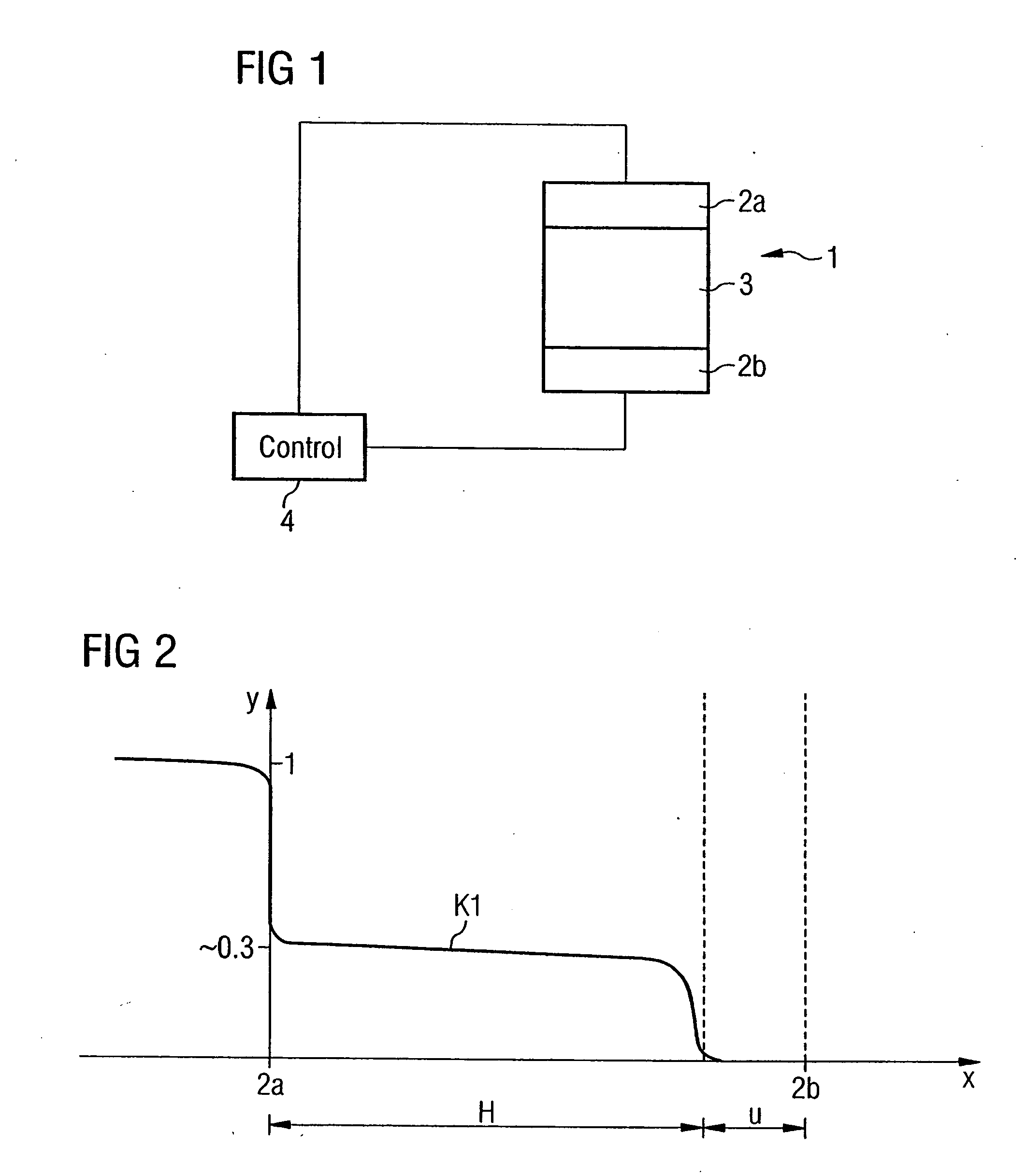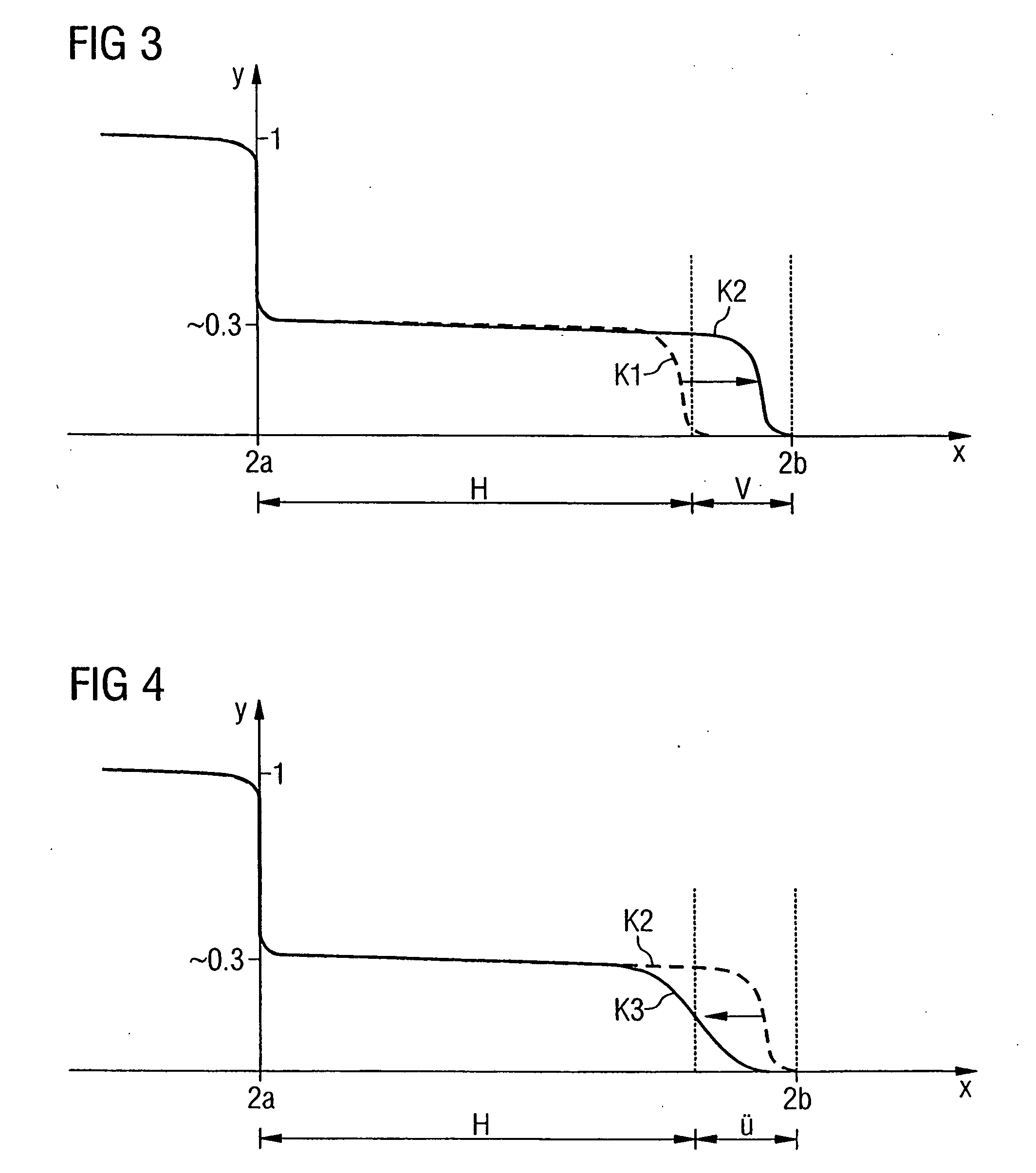Method for manufacturing resistively switching memory devices
a technology of resistively switching memory and memory cell, which is applied in the direction of digital storage, semiconductor devices, instruments, etc., can solve the problems of cbram memory cell not being able to meet the requirements of cbram memory cell, amorphicity of probes may be lost, and the electrical resistance between electrodes may vary relatively strongly
- Summary
- Abstract
- Description
- Claims
- Application Information
AI Technical Summary
Benefits of technology
Problems solved by technology
Method used
Image
Examples
Embodiment Construction
[0051]FIG. 1 shows schematically and by way of example the structure of a resistively switching memory cell 1 and a central control device 5 connected thereto.
[0052] On an appropriate memory device or memory chip, respectively, a plurality of further memory cells that are of a structure similar or identical to the memory cell 1 illustrated in FIG. 1 may be arranged, e.g. in an appropriate memory cell field positioned side by side in a plurality of rows or columns. In the following, the basic functioning of a resistively switching memory cell is illustrated by way of example.
[0053] The memory cells 1 may be any kind of resistively switching memory cells, e.g. Phase Change Memory Cells or CBRAM memory cells (CB=Conductive Bridging). Controlled by a central control device 5 provided on the memory device, specific writing or deleting processes may be performed in the memory cells 1 of the memory device.
[0054] As results from FIG. 1, each of the above-mentioned memory cells 1 comprise...
PUM
 Login to View More
Login to View More Abstract
Description
Claims
Application Information
 Login to View More
Login to View More - R&D
- Intellectual Property
- Life Sciences
- Materials
- Tech Scout
- Unparalleled Data Quality
- Higher Quality Content
- 60% Fewer Hallucinations
Browse by: Latest US Patents, China's latest patents, Technical Efficacy Thesaurus, Application Domain, Technology Topic, Popular Technical Reports.
© 2025 PatSnap. All rights reserved.Legal|Privacy policy|Modern Slavery Act Transparency Statement|Sitemap|About US| Contact US: help@patsnap.com



